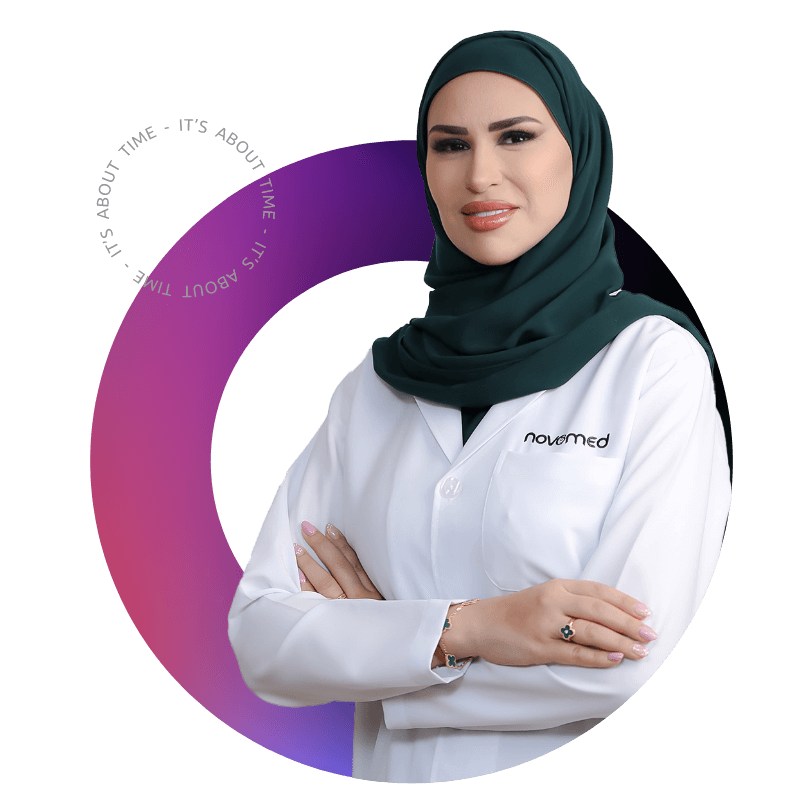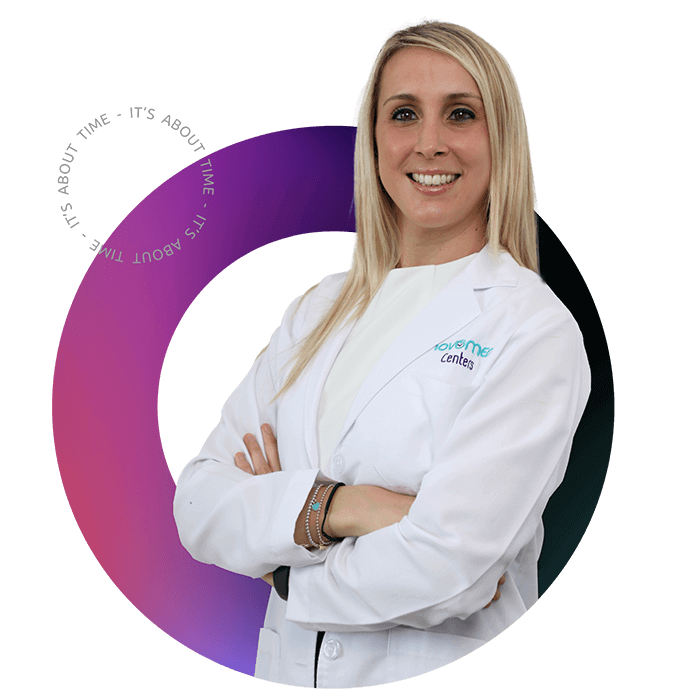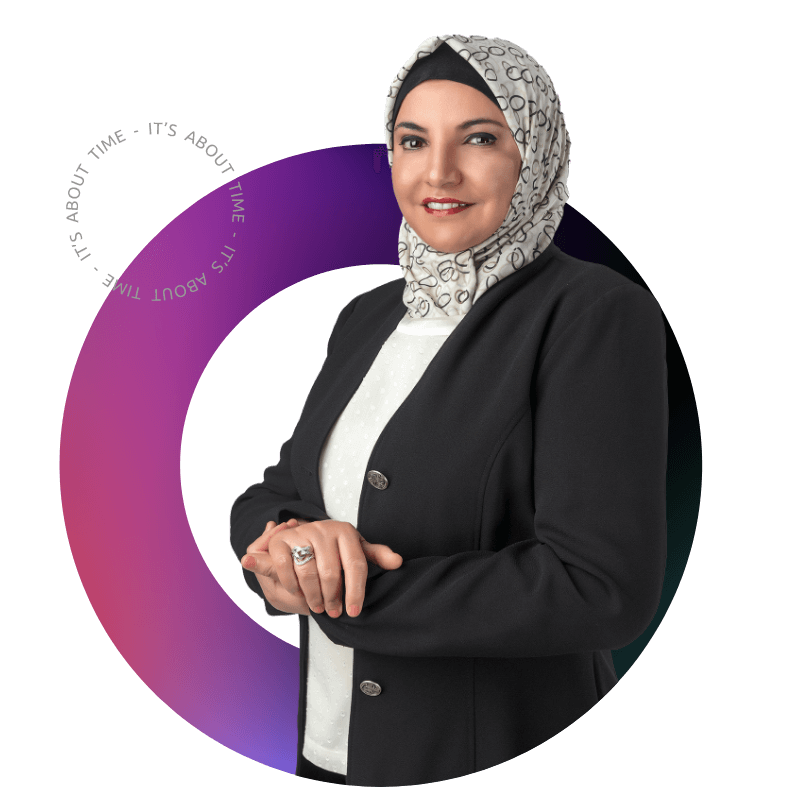The pursuit of a more defined and aesthetically pleasing figure has driven the surging popularity of body contouring procedures in Saudi Arabia. Among the leading healthcare providers in this domain, Novomed shines brightly, offering a distinguished team of board-certified plastic surgeons renowned for their expertise and artistry.
What is body contouring?
Body contouring or body sculpting refers to a set of cosmetic procedures designed to enhance the shape and appearance of the body by addressing areas with excess fat, loose skin, or cellulite. These procedures are often helpful after significant weight loss or to achieve a more sculpted and toned physique.
What are the procedures that can be included in body contouring?
Body contouring can include various surgical or non-surgical techniques based on individual goals and preferences.
Non-surgical techniques
With advancements in technology, achieving your aesthetic goals doesn’t always require going under the knife. At Novomed, we offer a wide range of personalized, non-surgical body contouring techniques, including the following:
1. Cryolipolysis (CoolSculpting): This technique uses controlled cooling to freeze and destroy fat cells in targeted areas. A special applicator is placed on the skin, drawing in a bulge of fat and subjecting it to temperatures just low enough to damage the fat cells without harming surrounding tissue. Over a few weeks, the body naturally eliminates the destroyed cells, resulting in a noticeable reduction in fat deposits. Ideal for stubborn pockets of fat on the abdomen, flanks, love handles, and inner thighs.
2. Radiofrequency (RF) Therapy: RF energy heats targeted areas of skin and underlying tissue, stimulating collagen production and tightening loose skin. The heat also melts fat cells, leading to gradual fat reduction and improved skin elasticity. This technique can be used on various areas, including the face, neck, abdomen, arms, and thighs.
3. Ultrasound Cavitation: Low-frequency ultrasound waves are directed at targeted fat deposits, creating vibrations that disrupt and liquefy fat cells. These liquefied cells are then eliminated through the lymphatic system. Ultrasound cavitation is particularly effective for smaller areas like the chin, cheeks, and upper arms.
4. Laser Lipolysis: Similar to RF therapy, laser lipolysis uses laser energy to heat and melt fat cells. However, it targets deeper fat layers compared to RF. This technique is suitable for treating larger areas like the abdomen, flanks, and buttocks.
5. Deoxycholic Acid Injections (Kybella): This injectable treatment uses deoxycholic acid, a naturally occurring molecule that helps break down fat. When injected into small pockets of fat, like under the chin, it destroys fat cells, leading to a gradual reduction in the treated area.
6. Non-invasive Muscle Stimulation (NMES): NMES devices deliver electrical pulses to muscle groups, causing them to contract and relax rhythmically. This mimics the effects of exercise, toning and strengthening muscles to improve the overall body contour. While not directly targeting fat, NMES can create a more defined and lifted appearance.
Surgical techniques
When non-surgical methods aren’t enough, or when loose skin is a major concern, surgical body contouring procedures offer more dramatic and long-lasting results. While requiring incisions and recovery time, these techniques can significantly re-sculpt your figure and boost your confidence. Here’s a breakdown of our popular surgical options:
1. Liposuction: This procedure targets stubborn fat deposits in areas like the abdomen, flanks, thighs, arms, and back and is done by inserting a thin cannula (tube) through small incisions to suction out fat cells. Different technologies, like ultrasound-assisted liposuction, can enhance precision and results. Liposuction offers effective fat reduction, smoother body contours, improved definition.
2. Tummy Tuck (Abdominoplasty): This procedure is a suitable option to address excess skin and lax muscles in the abdomen. During surgery, excess skin and fat are removed, abdominal muscles are tightened, and the navel is repositioned. After recovery, you will notice dramatic improvement in midsection appearance, tighter muscles, reduced abdominal bulge.
3. Brazilian Butt Lift: This minimally invasive technique aims to improve the appearance of flat or sagging buttocks by transferring fat from other areas of the body (like the abdomen or thighs) to the buttocks to increase volume and shape. This procedure results in fuller, rounder buttocks, improved body proportions, enhanced confidence.
4. Breast Augmentation/Reduction: Breast cosmetic procedures can help increase or decrease breast size and shape. During surgery, implants are inserted or existing breast tissue is removed and reshaped through incisions around the nipple or in the crease beneath the breast. Breast cosmetic surgeries have helped many women achieve their desired breast size and shape, improved body balance, boost in self-esteem.
5. Body Lift: This surgical procedure is a great option to get rid extensive loose skin after significant weight loss or pregnancy, typically on the arms, abdomen, buttocks, and thighs. During surgery, excess skin is removed and the remaining skin is tightened through strategic incisions, resulting in significant improvement in skin laxity, smoother contours, restored self-confidence.
Remember, the best option for you will depend on your individual goals, body type, and budget. During your consultation with one of our a expert plastic surgeon, you will be able to discuss your options and determine the most appropriate treatment for your desired results.
Am I a suitable candidate for body contouring?
Whether you’re interested in non-surgical or surgical body contouring, being a suitable candidate requires considering several factors:
General Health:
- Overall good health: You should be free from major medical conditions like heart disease, uncontrolled diabetes, or active infections.
- Non-smoker: Smoking significantly hinders wound healing and increases risks of complications.
- Stable weight: Ideally, you should be close to your ideal weight or be actively working towards it. Significant weight fluctuations can compromise results.
- Realistic expectations: Understand that body contouring refines, not transforms. Set realistic goals and focus on improvement, not unrealistic perfection.
Body Composition:
- Target areas: Focus on localized, stubborn fat deposits not responding to diet and exercise. Extensive fat reduction is better addressed with weight loss strategies.
- Skin quality: Good skin elasticity is crucial for optimal results, especially with surgical procedures. Loose skin may require additional skin removal procedures.
- Age: While age isn’t a strict barrier, younger individuals typically have better skin elasticity and healing capacity.
Psychological well-being:
- Positive mindset: Understand the risks and potential complications. Be prepared for the recovery process and have a good support system.
- Motivation and commitment: You should be committed to following post-operative instructions and maintaining a healthy lifestyle for lasting results.
What happens during body contouring consultation?
Your initial consultation with a plastic surgeon will cover the following key aspects:
- Discussing your goals: You will tell your aesthetic objectives and the changes you wish to achieve.
- Medical history review: A comprehensive review of your medical history, encompassing health conditions, allergies, and past surgeries, will be conducted.
- Medication and substance use inquiry: Details about the medications you are currently taking, including vitamins and over-the-counter drugs, as well as your use of alcohol and tobacco, will be discussed.
During this consultation, your plastic surgeon will also:
- Conduct a physical examination and precise measurements of the area(s) you intend to address.
- Utilize a marker or pen to mark the designated area(s) and take photographs for documentation.
- Inform about your available options and provide recommendations based on your goals.
- Review potential risks, discuss anesthesia options, and explore post-operative pain control, particularly if you are contemplating surgical intervention.
Additionally, based on the chosen body sculpting method, the team may request that you:
- Complete necessary blood work and physical examination.
- Cease smoking and discontinue certain medications, such as aspirin, NSAIDs, and herbal supplements, as advised by the healthcare team.
What happens during a surgical body contouring procedure?
The procedure is conducted in the following steps:
- Outlining and marking the designated surgical sites before the procedure.
- Positioning you on the surgical table and conducting thorough safety checks in collaboration with nursing and anesthesia professionals.
- Administering anesthesia, whether local or general, based on the specific requirements of the procedure.
- Cleaning and prepping the skin in the surgical area to maintain a sterile environment.
- Making incisions (cuts) in the skin as necessary, tailored to the specific procedure(s) being performed.
- Manipulating, repositioning, or shaping tissue and excess fat to achieve the desired aesthetic outcome. In procedures like abdominoplasty, it is expected to tighten muscles.
- Trimming away excess skin to refine and contour the treated area.
- Utilizing liposuction alone or in combination with other techniques to suction out excess fat.
- Closing incisions with precision and care, marking the conclusion of the surgical procedure.
- Bandaging the treated area to promote healing and provide necessary support post-surgery.
What are the aftercare instruction for body contouring?
Aftercare instructions for body contouring vary depending on the specific procedure you underwent, but some general guidelines apply across the board:
Rest and Recuperation:
- Prioritize rest: Give your body ample time to heal. Take off work if needed and avoid strenuous activities for the recommended period.
- Elevate treated areas: Keep treated areas elevated above your heart level whenever possible to reduce swelling.
- Wear compression garments: These garments help apply gentle pressure to control swelling and promote healing.
Pain Management:
- Manage pain with medication: Your doctor will prescribe pain medication to manage discomfort. Follow the instructions carefully and don’t hesitate to contact them if the pain is severe or uncontrolled.
- Apply ice packs: Use ice packs wrapped in a towel to reduce swelling and discomfort in the initial days.
Hygiene and Incision Care:
- Keep incisions clean and dry: Gently wash the incisions with mild soap and water as directed by your doctor. Avoid soaking in baths or swimming until your doctor gives you the green light.
- Manage drainage: Some drainage from incisions is normal. Use sterile gauze pads to absorb it and change them regularly.
- Avoid strenuous activity: Avoid any activity that could strain the incisions or put undue pressure on the treated areas.
General Wellbeing:
- Stay hydrated: Drink plenty of fluids to aid in healing and prevent dehydration.
- Maintain a healthy diet: Eat a nutritious diet rich in fruits, vegetables, and whole grains to support your body’s recovery.
- Avoid smoking and alcohol: Smoking and alcohol can impede healing and increase the risk of complications.
Follow-up Appointments:
- Attend all scheduled follow-up appointments: These are crucial for monitoring your progress and addressing any concerns you may have.
- Report any concerns promptly: Don’t hesitate to contact your doctor if you experience any unusual symptoms, excessive swelling, redness, or fever.
Additional Tips:
- Scar management: Once your incisions are fully healed, you can explore scar management options like silicone gels or creams to minimize their appearance.
- Massage therapy: After your doctor’s approval, gentle massage therapy can help improve circulation and reduce scar tissue.
- Maintain a healthy lifestyle: Committing to a healthy lifestyle with regular exercise and a balanced diet will help you maintain your results and boost your overall well-being.
It’s important to remember that everyone heals at their own pace, so be patient with yourself and focus on listening to your body. With proper care and attention, you’ll be enjoying your new sculpted figure in no time!
Book your appointment at Novomed today!
Novomed is home to some of the best plastic surgeons in Saudi Arabia and stands as the premier destination for body contouring, boasting the expertise of its leading plastic surgeons.
Entrust your transformative journey to Novomed, where the legacy of exceptional care and top-tier plastic surgeons ensures a confident and refined version of yourself.




























